Mars Exploration Statistics By Launch Windows, Organizations And Radiation Exposure (2025)

Updated · Jun 26, 2025

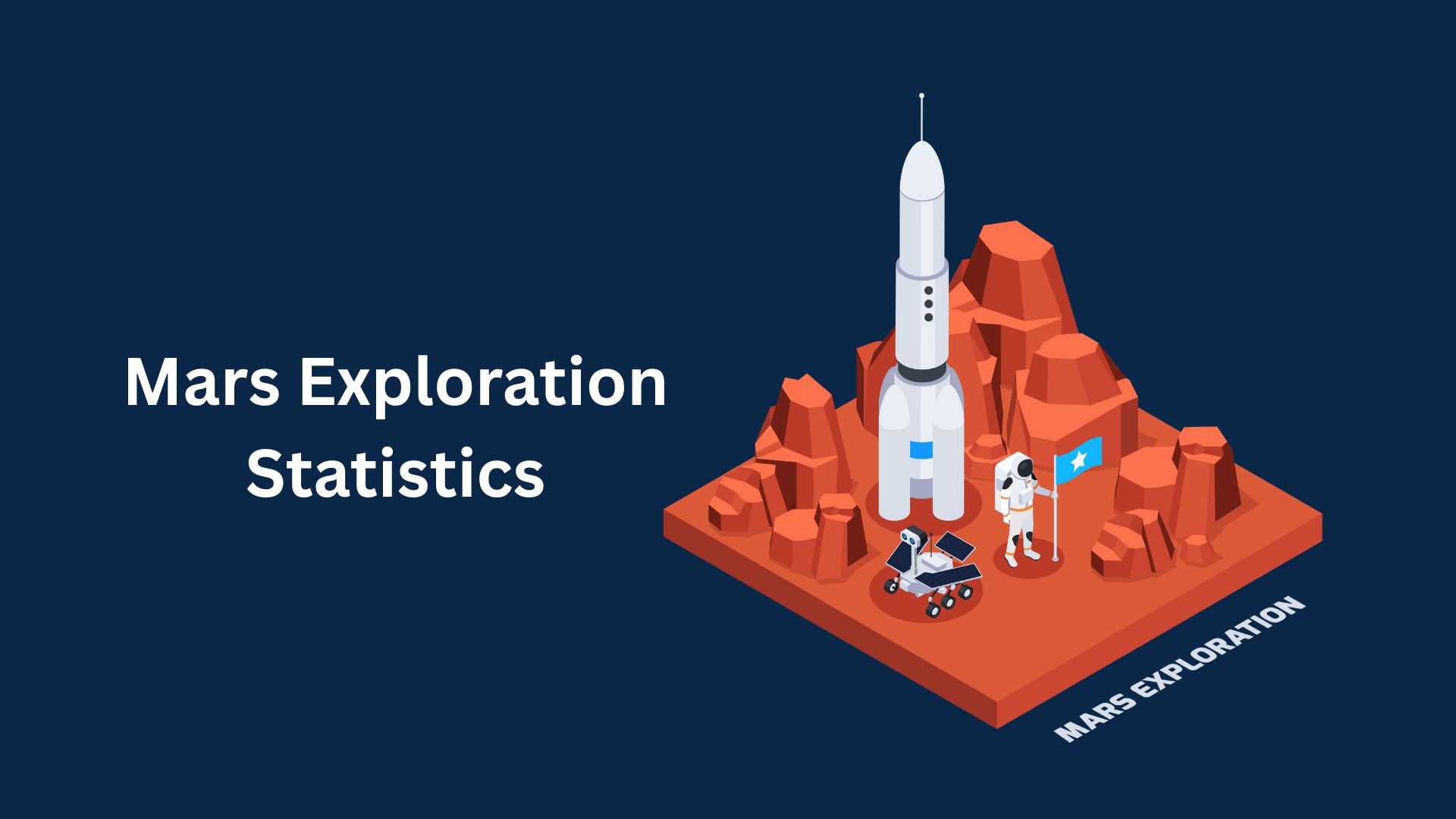
WHAT WE HAVE ON THIS PAGE
- Introduction
- Editor’s Choice
- General Mars Exploration Statistics
- Mars Exploration Statistics By Launch Windows
- NASA’s Mars Exploration Program Plan (from 2024 to 2044)
- List Of Mars Mission
- Mars Exploration Missions By Organizations
- Proposed Mars Missions Statistics
- Future Mars Exploration Mission Statistics
- Mars Exploration Rovers Statistics
- Longest Distance Travelled By Mars Rovers
- Mars Exploration Statistics By Radiation Exposure
- Driving Distance Analyses On Mars And The Moon
- Mars Exploration Statistics By Budgetary Contributions
- NASA’s Mars Exploration Program Statistics
- Europe’s Mars Exploration Statistics
- China’s Mars Exploration Mission Statistics
- Indian Mars Exploration Missions Statistics
- Top Five Reasons For Mars Exploration
- Conclusion
Introduction
Mars Exploration Statistics: Mars exploration is one of the most exciting areas in modern space science. Mars has fascinated people for centuries, and now, technology lets us explore it in more detail. Space agencies like NASA, ESA, CNSA (China), and ISRO (India) lead missions to understand Mars better.
These missions look for clues about whether Mars once had life and prepare for future human visits. Robotic missions have found evidence of water, complex landforms, and a thin atmosphere. Today, scientists focus on returning samples, using Mars’ resources, and developing technologies for human missions. These expensive missions provide important information about Mars.
Editor’s Choice
- NASA’s budget for Mars exploration in 2024 is around USD 3 billion, approximately 8% of its total budget.
- By the 2030s, companies like SpaceX will have spent billions aiming for human missions to Mars.
- More than 60% of Mars missions have been successful, with NASA’s Perseverance rover playing a key role.
- Mars Exploration Statistics show that, due to advancing technology, the Mars exploration market could exceed USD 20 billion by 2030.
- Based on research and innovation, investments focus on developing new space technologies, with 30% going to robotics and AI for planetary exploration.
- Meanwhile, countries like the U.S., China, and the UAE are leading, with China investing USD 1.5 billion in Mars missions.
- The sector is projected to create thousands of jobs globally, from engineering to research.
- Mars Exploration Statistics further states that some experts estimate that by the end of 2040, around 1% of global space budgets will focus on preparing for human settlement on Mars.
- At the same time, the potential Mars tourism market will generate USD 2-3 billion annually.
- International partnerships, such as those between NASA and ESA, are crucial for pooling resources and sharing costs, aiming for greater Mars exploration success.
General Mars Exploration Statistics
- Mars is a rocky planet like Earth, but it is half the size of Earth. It has a thin atmosphere and a cold, desert-like surface.
- Scientists using telescopes discovered two moons, Phobos and Deimos, ice at the poles, and Olympus Mons, which is the tallest mountain in our Solar System.
- Mars has been explored by spacecraft sent from Earth since the late 20th century.
- These missions have increased our knowledge about Mars, especially its geology and potential for life.
- In April 2024, NASA chose several companies to study how they can help with robotic science on Mars.
- As per Mars Exploration Statistics, NASA has sent five robot vehicles, called rovers, to Mars. These rovers study the landscape, take photos, and collect data, helping scientists understand more about the planet.
- The European Space Agency (ESA) has delayed the launch of its Rosalind Franklin rover, which is now expected to happen later in the 2020s.
- India plans to launch the Mars Orbiter Mission 2 in 2031 for further exploration of Mars’ atmosphere and surface.
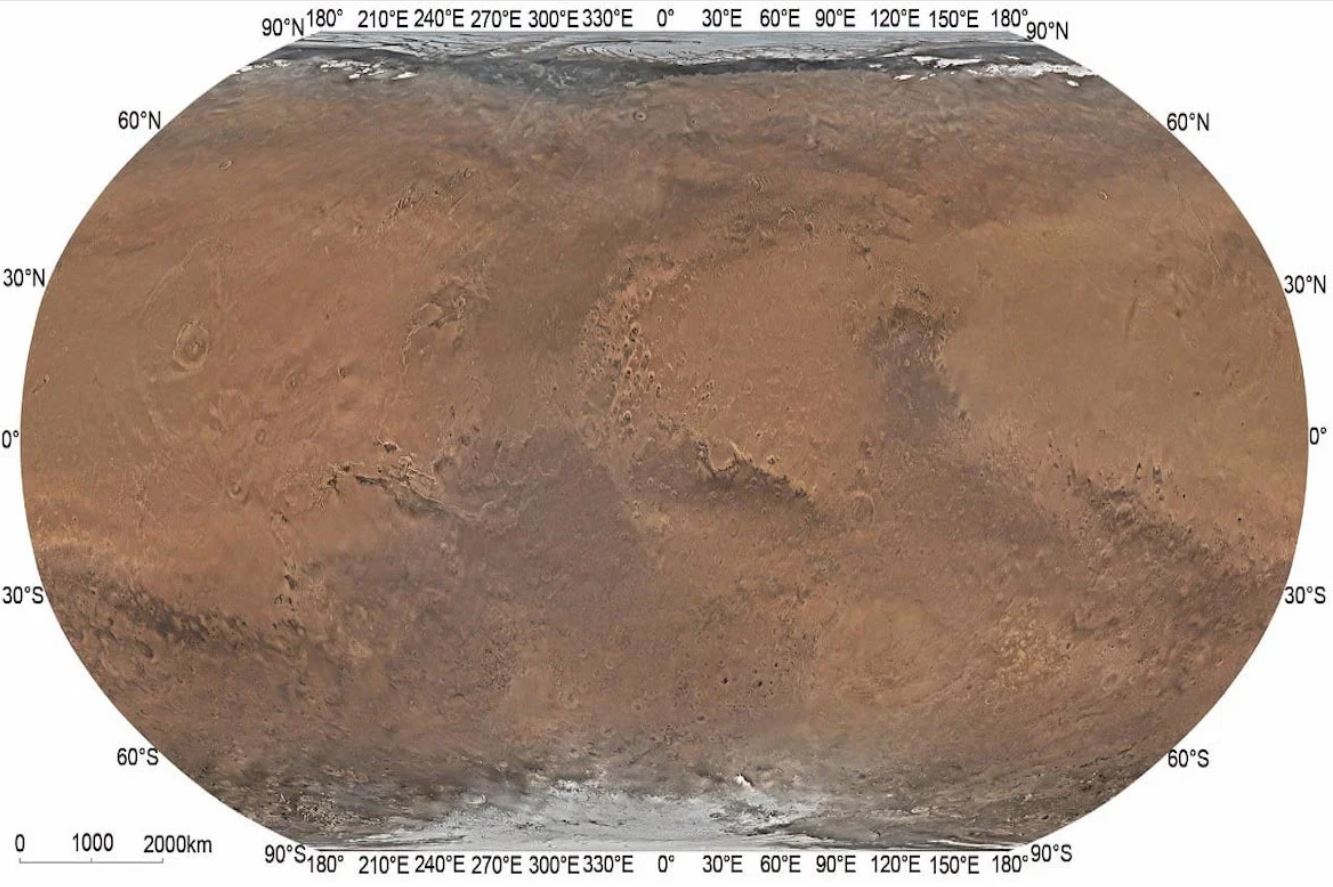 (Source: datainnovation.org)
(Source: datainnovation.org)
- China’s Tianwen-1 mission, the country’s first Mars exploration project, has achieved significant milestones since its launch in July 2020.
- A key achievement is the release of a global colour image map of Mars, which is considered the most detailed map of the planet to date.
Mars Exploration Statistics By Launch Windows
- The best times to launch missions to Mars happen every 780 days, or about every two years and two months.
- There was a low in 1969 and 1971, a peak in the late 1970s, and another low in 1986 and 1988.
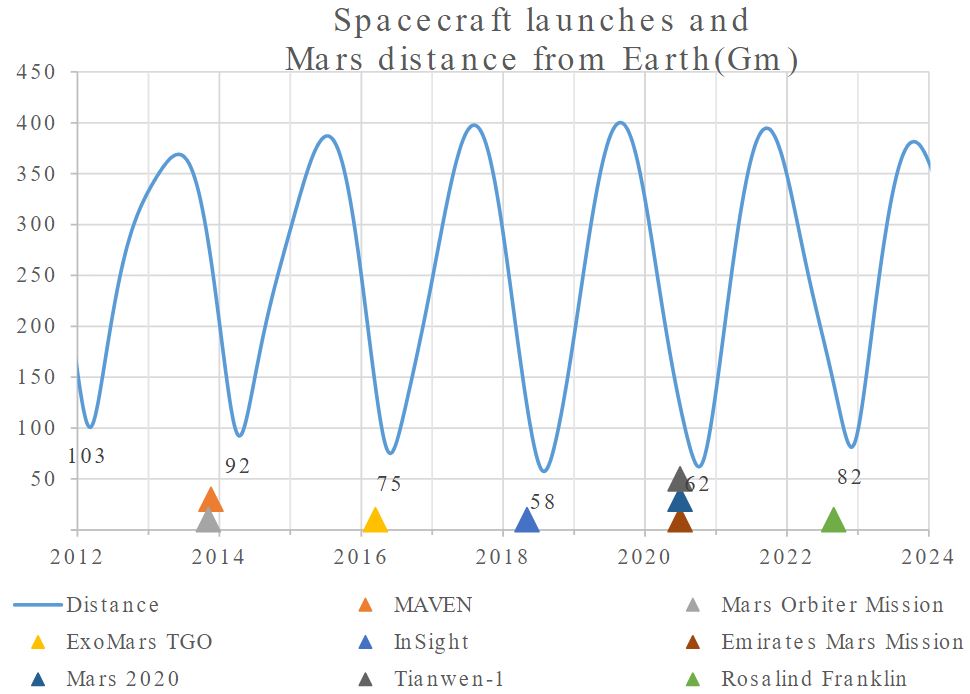 (Source: upload.wikimedia.org)
(Source: upload.wikimedia.org)
- Escape and Plasma Acceleration and Dynamics Explorers (ESCAPADE) is expected to launch in November 2024 and is part of NASA’s SIMPLEx program.
- This mission to Mars will use two spacecraft, named Blue and Gold, to study the planet’s atmosphere.
The table below elaborates on the launch opportunities from 2013 to 2024:
| Launch Date | Spacecraft (launched or planned) |
| 2024 (October to November) | EscaPADE |
| 2020 (July to September) |
|
| 2018 (May) | InSight |
| 2016 (March) | ExoMars TGO |
| 2013 (November) | MAVEN, Mars Orbiter Mission |
Similarly, expected launch opportunities in the coming years are stated as:
| 2026 (November to December) |
|
| 2028 / 2029 (December to January) |
|
NASA’s Mars Exploration Program Plan (from 2024 to 2044)
- As mentioned in Mars Exploration Statistics, from 2024 to 2030, ongoing missions like Perseverance, Curiosity, and orbiters will continue while new small landers develop.
- Meanwhile, missions between 2031 and 2035 will bring Martian samples back to Earth for detailed study.
- Advanced satellites and landers will explore Mars' air, ground, and underground environment from 2036 to 2040.
- Between 2041 and 2044, robots will begin missions to prepare for humans, showing resource use and building infrastructure.
List Of Mars Mission
| Launch Date | Spacecraft | Operator | Mission | Mission Type | Result |
| 13 October 2023 | Psyche | United States (NASA) | Psyche | Flyby (Gravity assist) | Enroute |
|
30 July 2020
|
Ingenuity |
United States (NASA)
|
Mars 2020
|
Helicopter | Successful |
| Perseverance | Rover | Operational | |||
|
23 July 2020
|
Tianwen-1 orbiter |
China (CNSA)
|
Tianwen-1
|
Orbiter | Operational |
| Tianwen-1 lander | Lander |
Successful
|
|||
| Zhurong rover | Rover | ||||
| Tianwen-1 Remote Camera | Lander | ||||
| Tianwen-1 Deployable Camera 2 | Orbiter | ||||
| 19 July 2020 | Hope | United Arab Emirates (MBRSC) | Emirates Mars Mission | Orbiter | Operational |
|
5 May 2018
|
InSight |
United States
(NASA) |
InSight
|
Lander |
Successful
|
| Marco A | Flyby | ||||
| Marco B | Flyby | ||||
|
March, 2016
|
ExoMars Trace Gas Orbiter |
Roscosmos
(ESA) |
ExoMars 2016
|
Orbiter | Operational |
| Schiaparelli EDM lander | Lander | Spacecraft failure | |||
| 18 November 2013 | MAVEN | United States (NASA) | MAVEN | Orbiter | Operational |
| 5 November 2013 | Mars Orbiter Mission | India (ISRO) | Mars Orbiter Mission | Orbiter | Successful |
| 26 November 2011 | Curiosity | NASA (U.S.) | Mars Science Laboratory | Rover | Operational |
|
8 November 2011
|
Phobos-Grunt | Roscosmos (Russia) |
Fobos-Grunt / Yinghuo-1
|
Orbiter Phobos sample return |
Launch failure |
| Yinghuo-1 | CNSA (China) | Orbiter | Precluded Lost with Phobos-Grunt |
||
| 27 September 2007 | Dawn | NASA (U.S.) | Dawn | Flyby (Gravity assist) |
Successful |
| 4 August 2007 | Phoenix | NASA (U.S.) | Phoenix | Lander | Successful |
| 12 August 2005 | Mars Reconnaissance Orbiter | NASA (U.S.) | Mars Reconnaissance Orbiter | Orbiter | Operational |
|
2 March 2004
|
Rosetta |
ESA
|
Rosetta
|
Flyby (Gravity assist)
|
Successful
|
| Philae | |||||
| 8 July 2003 | Opportunity (MER-B) |
NASA (U.S.) | Opportunity | Rover | Successful |
| 10 June 2003 | Spirit (MER-A) |
NASA (U.S.) | Spirit | Rover | Successful |
|
2 June 2003
|
Beagle 2 |
ESA
|
Mars Express
|
Lander | Lander failure |
| Mars Express | Orbiter | Operational | |||
| 7 April 2001 | Mars Odyssey | NASA (U.S.) | Mars Odyssey | Orbiter | Operational |
|
3 January 1999
|
Mars Polar Lander |
NASA (U.S.)
|
Mars Polar Lander / Deep Space 2
|
Lander |
Spacecraft failure
|
| Deep Space 2 |
Penetrator
|
||||
| Deep Space 2 | |||||
| 11 December 1998 | Mars Climate Orbiter | NASA (U.S.) | Mars Climate Orbiter | Orbiter | Spacecraft failure |
| 3 July 1998 | Nozomi (PLANET-B) |
Japan (ISAS) | Nozomi | Orbiter | Spacecraft failure |
|
4 December 1996
|
Mars Pathfinder |
NASA (U.S.)
|
Mars Pathfinder
|
Lander |
Successful
|
| Sojourner | Rover | ||||
|
16 November 1996
|
Mars 96 (M1 No.520) (Mars-8) |
Rosaviakosmos (Russia)
|
Mars 96
|
Orbiter Penetrators |
Launch failure |
| Mars 96 lander | Lander |
Launch failure
Lost with Mars 96 |
|||
| Mars 96 lander | Lander | ||||
| Mars 96 penetrator | Penetrator | ||||
| Mars 96 penetrator | Penetrator | ||||
| 7 November 1996 | Mars Global Surveyor | NASA (U.S.) | Mars Global Surveyor | Orbiter | Successful |
| 25 September 1992 | Mars Observer | NASA (U.S.) | Mars Observer | Orbiter | Spacecraft failure |
|
7 July 1988
|
Phobos 1 (1F No.101) |
Soviet Union
|
Phobos 1
|
Orbiter | Spacecraft failure |
| DAS | Phobos lander | Failure Lost with Phobos 1 |
|||
|
12 July 1988
|
Phobos 2 (1F No.102) |
Soviet Union
|
Phobos 2
|
Orbiter | Mostly successful |
| Prop-F | Phobos rover |
Failure
Lost with Phobos 2 |
|||
| DAS | Phobos lander | ||||
|
20 August 1975
|
Viking 1 orbiter |
NASA (U.S.)
|
Viking 1
|
Orbiter |
Successful
|
| Viking 1 lander | Lander | ||||
|
9 September 1975
|
Viking 2 orbiter |
NASA (U.S.)
|
Viking 2
|
Orbiter |
Successful
|
| Viking 2 lander | Lander | ||||
|
5 August 1973
|
Mars 6 (3MP No.50P) |
Soviet Union
|
Mars 6
|
Flyby | Successful |
| Mars 6 lander | Lander | Spacecraft failure | |||
|
9 August 1973
|
Mars 7 (3MP No.51P) |
Soviet Union
|
Mars 7
|
Flyby | Successful |
| Mars 7 lander | Lander | Spacecraft failure | |||
| 21 July 1973 | Mars 4 (3MS No.52S) |
Soviet Union | Mars 4 | Orbiter | Partial success |
| 25 July 1973 | Mars 5 (3MS No.53S) |
Soviet Union | Mars 5 | Orbiter | Successful |
|
5 August 1973
|
Mars 6 |
Soviet Union
|
Mars 6
|
Flyby | Successful |
| Mars 6 lander | Lander | Spacecraft failure | |||
|
9 August 1973
|
Mars 7 |
Soviet Union
|
Mars 7
|
Flyby | Successful |
| Mars 7 lander | Lander | Spacecraft failure | |||
| 30 May 1971 | Mariner 9 | NASA (U.S.) | Mariner 9 | Orbiter | Successful |
|
28 May 1971
|
Mars 3 |
Soviet Union
|
Mars 3
|
Orbiter | Successful |
| Mars 3 lander | Lander | Partial success | |||
| PrOP-M | Rover | The carrier vehicle failed before the rover was deployed | |||
|
19 May 1971
|
Mars 2 lander |
Soviet Union
|
Mars 2
|
Lander | Spacecraft failure |
| Mars 2 | Orbiter | Successful | |||
| PrOP-M | Rover | Failure | |||
| 10 May 1971 | Kosmos 419 | Soviet Union | Kosmos 419 | Orbiter | Launch failure |
| 9 May 1971 | Mariner 8 | NASA (U.S.) | Mariner 8 | Orbiter | Launch failure |
| 2 April 1969 | 2M No.522 | Soviet Union | 2M No.522 | Orbiter | Launch failure |
|
27 March 1969
|
Mariner 7 | NASA (U.S.) | Mariner 7 | Flyby | Successful |
| 2M No.521 | Soviet Union | 2M No.521 | Orbiter | Launch failure | |
| 25 February 1969 | Mariner 6 | NASA (U.S.) | Mariner 6 | Flyby | Successful |
| 30 November 1964 | Zond 2 | Soviet Union | Zond 2 | Flyby | Spacecraft failure |
| 28 November 1964 | Mariner 4 | NASA (U.S.) | Mariner 4 | Flyby | Successful |
| 5 November 1964 | Mariner 3 | NASA (U.S.) | Mariner 3 | Flyby | Launch failure |
| 4 November 1962 | 2MV-3 No.1 | Soviet Union | 2MV-3 No.1 | Lander | Launch failure |
| 1 November 1962 | Mars 1 | Soviet Union | Mars 1 | Flyby | Spacecraft failure |
| 24 October 1962 | 2MV-4 No.1 | Soviet Union | 2MV-4 No.1 |
Flyby
|
Launch failure
|
| 14 October 1960 | 1M No.2 |
Soviet Union (OKB-1)
|
1M No.2 | ||
| 10 October 1960 | 1M No.1 | 1M No.1 |
(Source: wikipedia.org)
Is Exploring Mars Costly?
Indeed, Mars exploration is very expensive, and NASA’s Perseverance rover mission is expected to cost around USD 2.7 billion.
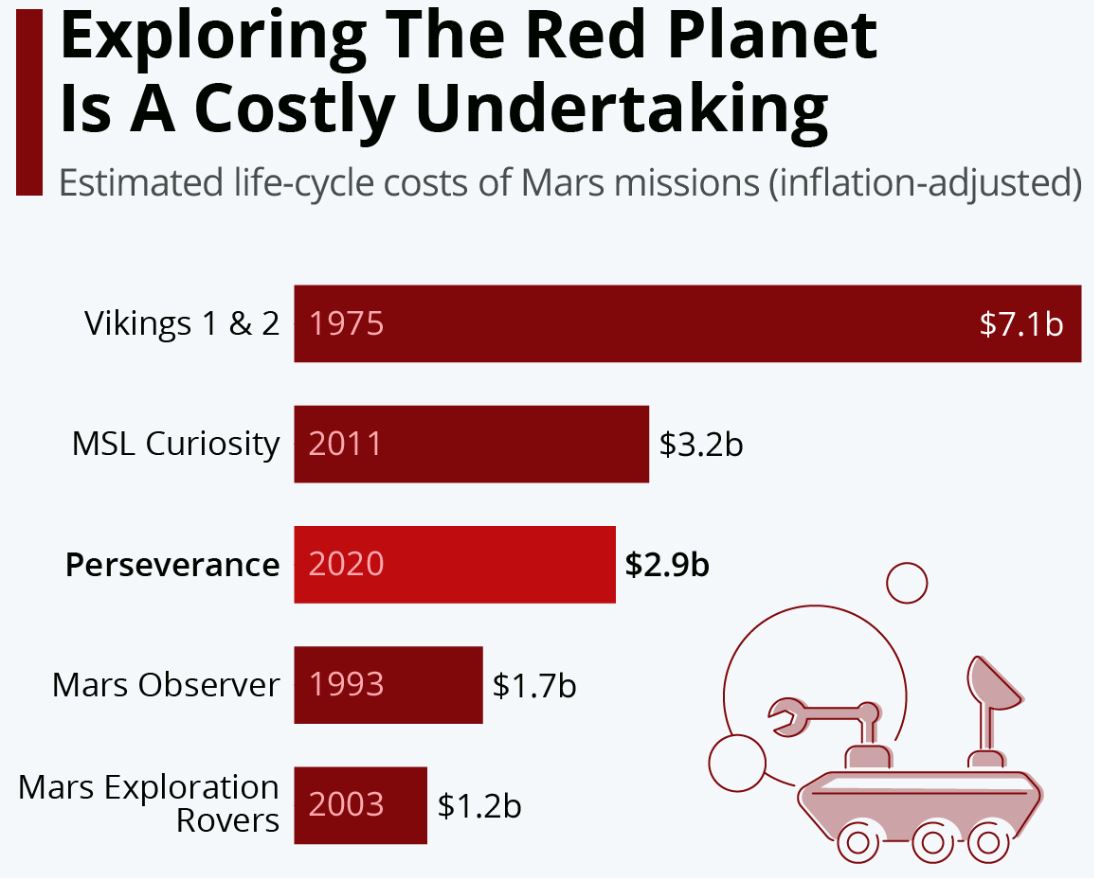 (Source: statista.com)
(Source: statista.com)
- In 2020, the estimated life-cycle costs of the Mars mission Perseverance were around USD 2.9 billion.
- Mars Exploration Statistics also show that other Mars mission costs are followed by Vikings 1 & 2 (USD 7.1 billion), MSL Curiosity (USD 3.2 billion), Mars Observer (USD 1.7 billion), and Mars Exploration Rovers (USD 1.2 billion).
Mars Exploration Missions By Organizations
Many organisations have explored or planned missions to Mars, so the table below elaborates on the number of Mars missions by the main space organisations.
| Names of Organisations | Total Missions | Successful Missions |
| NASA (United States) | Over 20 | As of 2024, around 16 missions have successfully reached Mars. |
| European Space Agency (ESA) | 3 | 2 |
| Roscosmos (Russia) | 18 | Two missions were partially successful. |
| China National Space Administration (CNSA) | 1 | Tianwen-1 (2020). |
| Indian Space Research Organisation (ISRO) | 1 | Mars Orbiter Mission or Mangalyaan, 2013 |
Proposed Mars Missions Statistics
| Proposed Date | Mission | Type | Organisation |
| 2024 | Mars-Grunt | Orbiter, lander, ascent vehicle, sample-return | Roscosmos |
| 2024 | MELOS rover | Rover and aircraft | JAXA |
| 2024 | SatRevolution | Orbiter | Poland |
| 2026 | Icebreaker Life | Lander | NASA |
| 2030 | Deimos and Phobos Interior Explorer (DePhine) | Orbiter and Martian moon flybys | ESA |
| NET 2030 | NASA-ESA Mars Sample-return | Orbiter/Lander/Return vehicle | NASA & ESA |
Future Mars Exploration Mission Statistics
| Proposed Date | Mission | Type | Organisation |
| NET October 2024 | Hera | Flyby to the Didymos asteroid system | ESA |
| NET Spring 2025 | EscaPADE | 2 Orbiters | NASA |
|
2026
|
SpaceX Uncrewed Landing | Uncrewed lander | SpaceX |
| Martian Moons eXploration (MMX) Phobos Sample Return Mission | Orbiter/Lander | JAXA | |
| First Commercial Mission to Mars | Lander | Relativity Space, Impulse Space | |
| 2028 | Tianwen-3 Mars sample-return mission | There are two spacecraft: one consists of an orbiter and return module, the other of a lander, ascent module, mobile sampling robot, and helicopter. | CNSA |
Mars Exploration Rovers Statistics
| Mars exploration rovers | Mission | Size | Weight | Duration | Distance Traveled |
| Zhurong Rover (CNSA, 2021-present) | Tianwen-1 | 2.6 meters long, 3 meters wide (with solar panels) | 240 kg | Still active | 1.92 km (as of 2024) |
| Perseverance Rover (NASA, 2021-present) | Mars 2020 | 3 meters long, 2.7 meters wide, 2.2 meters high | 1,025 kg | Still active | 17 km, to date |
| Curiosity Rover (NASA, 2012-present) | Mars Science Laboratory | 2.9 meters long, 2.7 meters wide, 2.2 meters high | 899 kg | Active (planned for two years) | Over 30 km |
| Opportunity Rover (NASA, 2004-2018) | Mars Exploration Rover (MER-B) | 1.6 meters long, 1.5 meters wide, 1.5 meters high | 185 kg | Active for nearly 15 years (planned for 90 days) | 45.16 km |
| Spirit Rover (NASA, 2004-2010) | Mars Exploration Rover (MER-A) | 1.6 meters long, 1.5 meters wide, 1.5 meters high | 185 kg | Active for six years (planned for 90 days) | 7.73 km |
| Sojourner Rover (NASA, 1997) | Mars Pathfinder | 65 cm long, 48 cm wide, 30 cm high | 10.6 kg | Active for 83 days (planned for seven days) | 100 meters |
Longest Distance Travelled By Mars Rovers
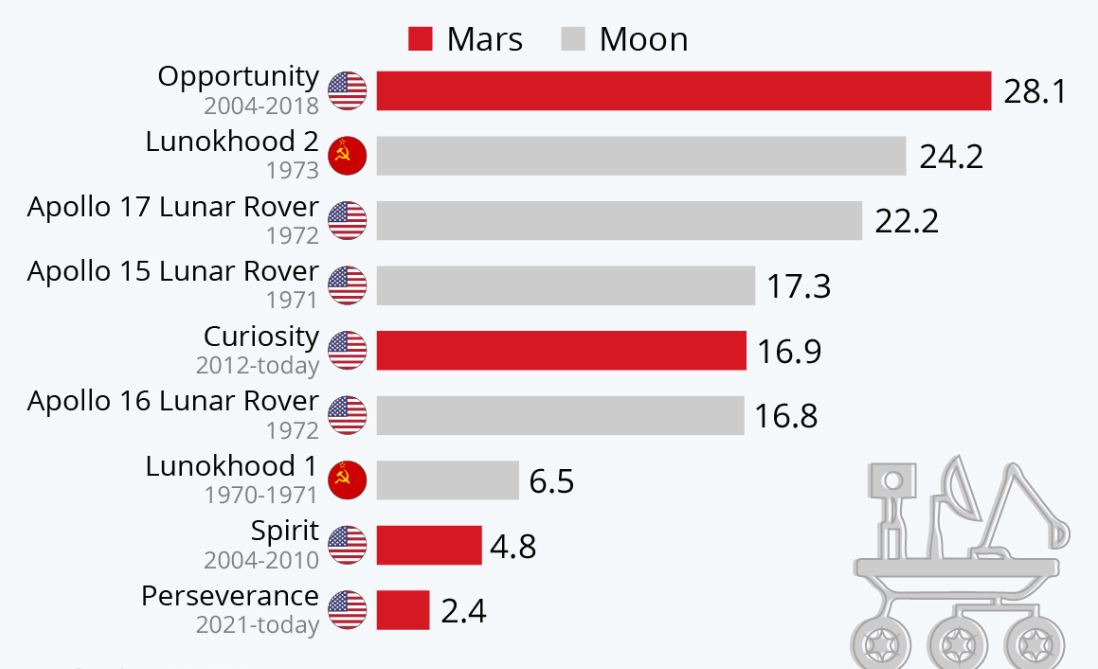 (Source: statista.com)
(Source: statista.com)
- NASA’s Perseverance rover has been exploring Mars for a year. It landed on the planet on February 18, 2021, and covered a distance of around 28.1 miles.
- Mars Exploration Statistics further reports that the total distance covered by Curiosity Mars rovers has been 16.9 miles to date, followed by Spirit (4.8 miles) and Perseverance (2.4 miles).
Mars Exploration Statistics By Radiation Exposure
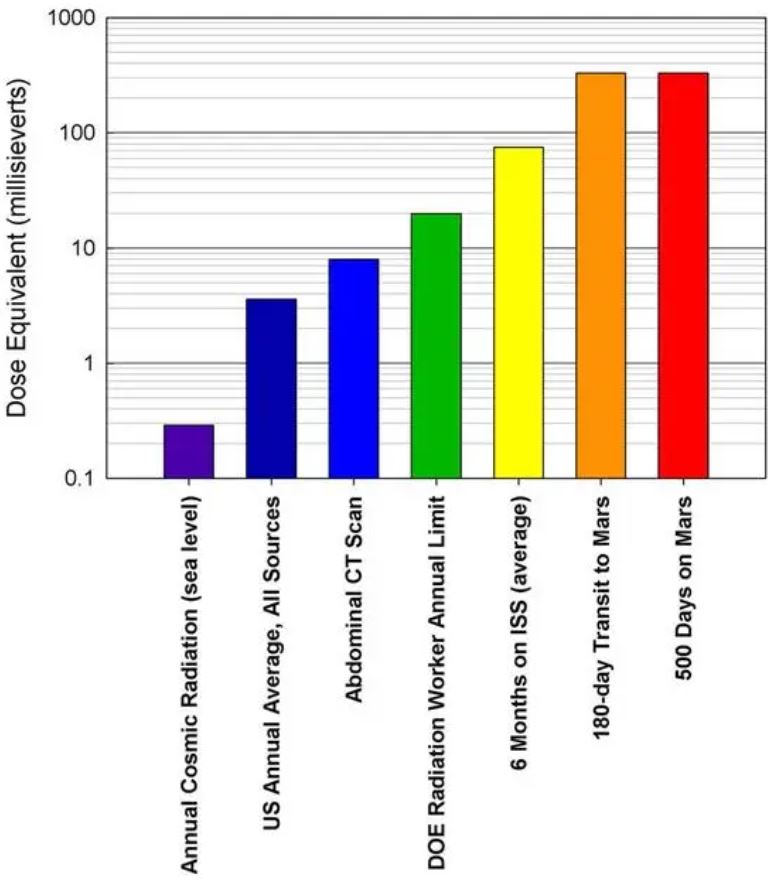 (Source: science.nasa.gov)
(Source: science.nasa.gov)
- Radiation on Mars: Mars’ surface receives an average daily radiation dose of 0.2 to 0.7 millisieverts (mSv). This is 100 times higher than the average daily radiation dose on Earth.
- During a round trip to Mars, astronauts are estimated to receive a total radiation dose of 600-1,000 millisieverts (mSv), equivalent to about 50 full-body CT scans.
- NASA has set a career radiation limit for astronauts of 1,000 millisieverts. A single Mars mission could expose astronauts to up to 60% of this lifetime limit.
Driving Distance Analyses On Mars And The Moon
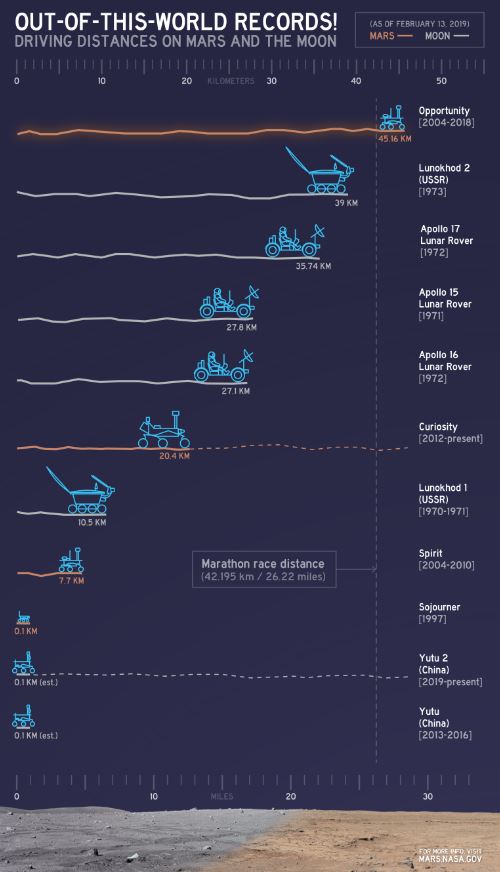 (Source: science.nasa.gov)
(Source: science.nasa.gov)
- By the end of the Mars Exploration Rovers, Spirit travelled 4.8 miles (7.7 kilometres) on Mars.
- Meanwhile, Opportunity drove 28.06 miles (45.16 kilometres), the longest distance a rover has covered on another planet.
Mars Exploration Statistics By Budgetary Contributions
- NASA’s Mars exploration budget continues to be substantial. The Mars Sample Return (MSR) mission is one of the most expensive upcoming projects, resulting in USD 5-7 billion.
- The Mars 2020 mission, which includes the Perseverance rover, had a total development and launch cost of around USD 2.7 billion, with an additional USD 300 million allocated annually for operations.
- ESA has committed significant resources to the ExoMars program, which consists of the Trace Gas Orbiter (TGO) and the Rosalind Franklin rover. The ExoMars mission has an overall estimated cost of €1.3 billion (approximately USD 1.4 billion), shared across ESA member states.
- ESA will contribute the Sample Fetch Rover and the Earth Return Orbiter for the Mars Sample Return mission, which is estimated to cost around €300-400 million (about USD 340-450 million).
NASA’s Mars Exploration Program Statistics
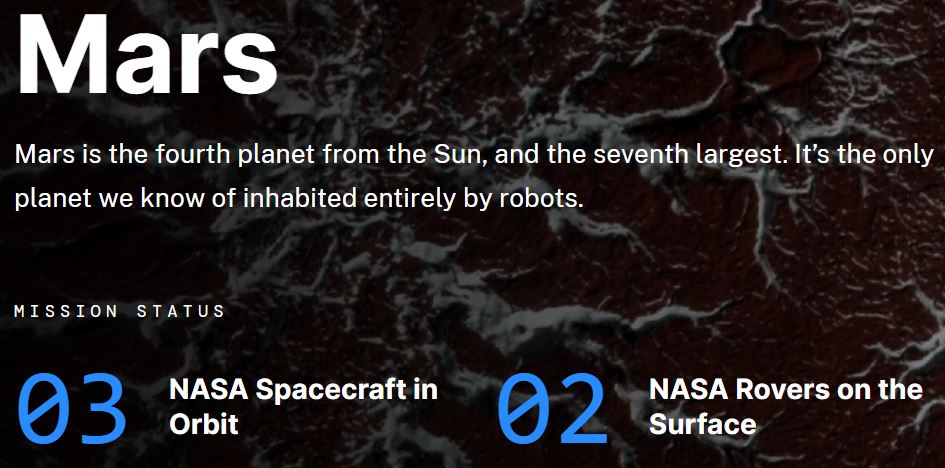 (Source: science.nasa.gov)
(Source: science.nasa.gov)
- NASA’s Mars Exploration Program has two rovers and three orbiters currently working on Mars.
- Since the 1960s, NASA has undertaken over 20 missions to Mars, 16 of which have been classified as successful.
- The first successful flyby of Mars by NASA is stated as Mariner 4 (1964).
- Similarly, the first successful landers were Viking 1 and 2 (1976).
- Mars Science Laboratory (Curiosity Rover, 2012): Still operational, exploring the Gale Crater.
- Perseverance Rover (2021): Collecting samples for the future Mars Sample Return mission.
- As per Mars Exploration Statistics, NASA has completed about 80% of its Mars missions, including orbiters, landers, and rovers that help us learn more about the planet.
- NASA’s budget for the Mars Exploration Program is part of its overall USD 27.2 billion request for 2024, marking a 7.1% increase from the previous year.
By Scientific Observations
- The Perseverance Rover has detected features in Jezero Crater that may suggest the presence of ancient microbial life, though further analysis is needed to confirm these findings.
- NASA is actively preparing to return soil and rock samples from Mars to Earth by the early 2030s.
- Perseverance discovered carbonate-bearing rocks in Jezero Crater, a significant finding as these minerals typically form in the presence of water.
- Studies from the MAVEN mission have shown how solar wind has stripped away much of Mars’s atmosphere, helping to explain why the planet transitioned from a potentially habitable world to its current dry and cold state.
- NASA missions have confirmed that liquid water once existed on Mars’s surface, with the Curiosity Rover finding signs of ancient lakes in Gale Crater.
- Research has revealed Mars’ massive volcanoes, such as Olympus Mons, and evidence of ancient volcanic activity.
- The planet’s atmosphere is about 100 times thinner than Earth’s, making entry, descent, and landing operations highly challenging for future missions.
Europe’s Mars Exploration Statistics
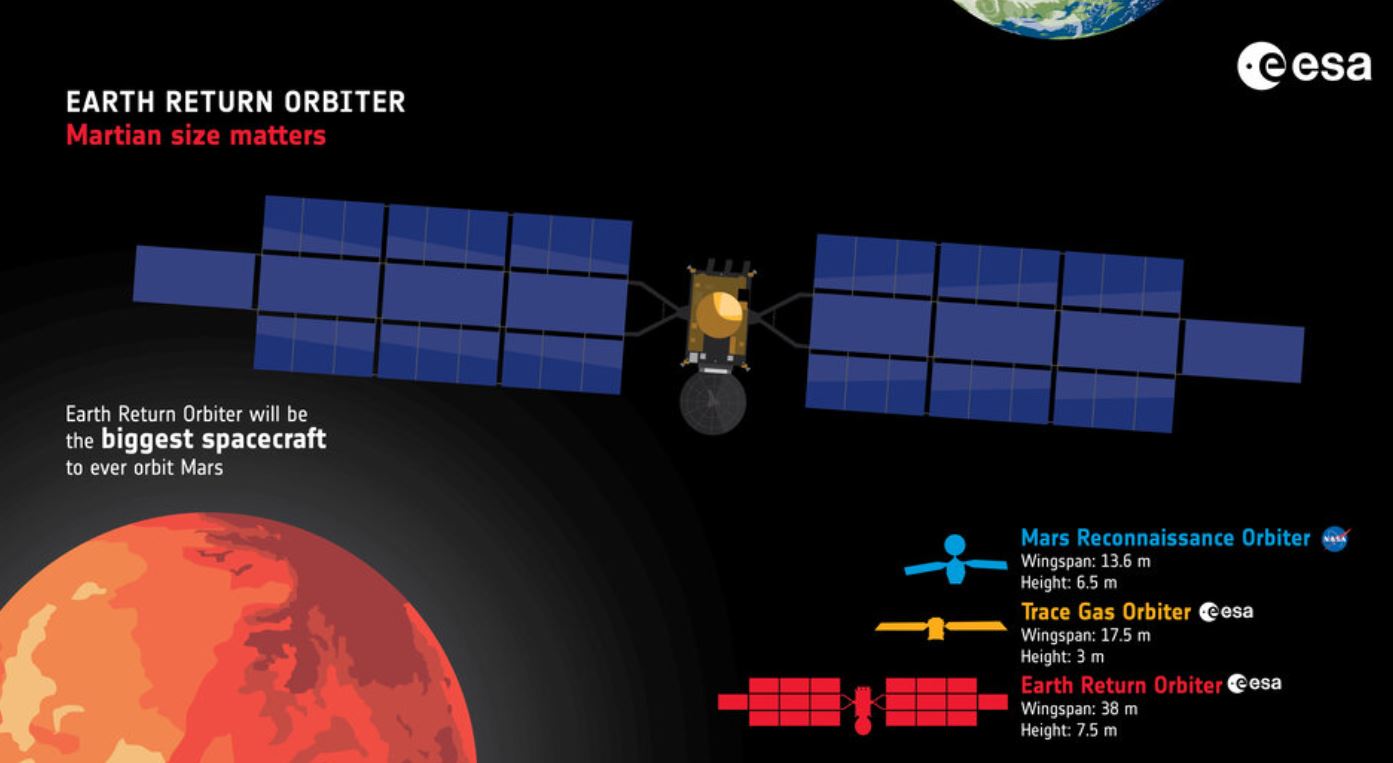 (Source: esa.int)
(Source: esa.int)
- The ExoMars Trace Gas Orbiter (TGO), launched in 2016, is examining Mars’ air, especially focusing on gases like methane.
- Europe’s first Mars rover, Rosalind Franklin, will launch in 2028 and drill 2 meters deep to find signs of life.
- By 2024, Mars Express had circled Mars more than 25,000 times since its launch in 2003, gathering valuable data.
- The orbiter’s camera captures images with 10-meter resolution, continuing its study of Mars’ surface, atmosphere, and moons.
China’s Mars Exploration Mission Statistics
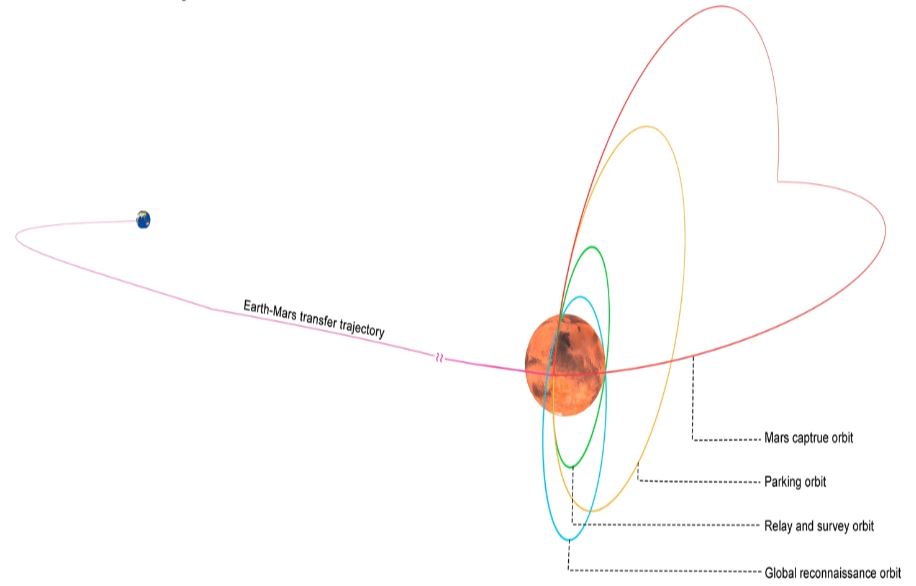
(Source: link.springer.com)
| Launch Date | Mission | Spacecraft | Launch site | Launch vehicle | Orbital insertion date | Landing date | Result |
|
July 23, 2020
04:41:15 |
Tianwen-1
|
Tianwen-1 orbiter |
Wenchang Space Launch Site
|
Long March 5, or Changzheng 5 (CZ-5)
|
February 10, 2021
|
– | Operational |
| Tianwen-1 lander |
May 14, 2021
|
Success
|
|||||
| Zhurong rover |
Indian Mars Exploration Missions Statistics
The image below illustrates the PSLV-XL C25 launched by the Mars Orbiter Mission on November 5, 2013.
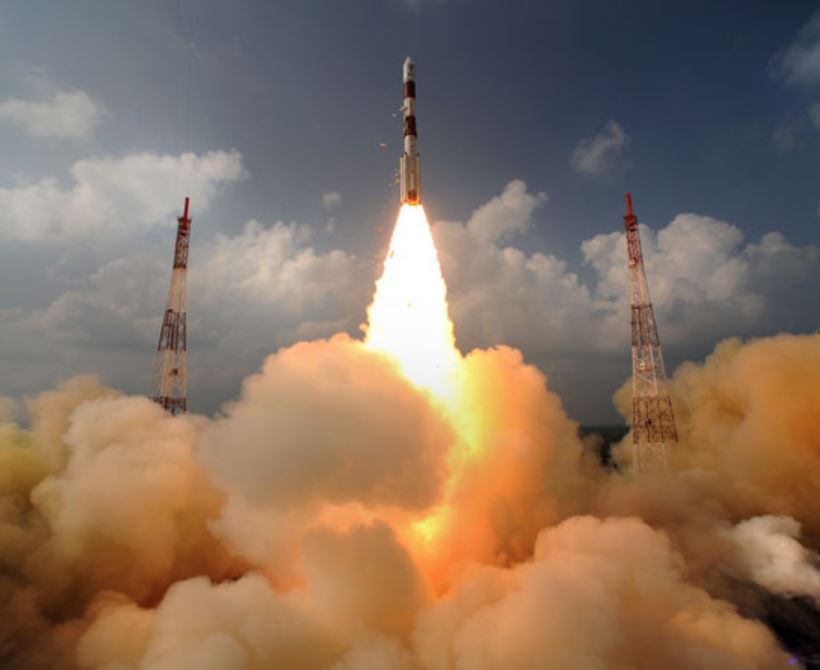 (Source: upload.wikimedia.org)
(Source: upload.wikimedia.org)
| Launch Date | Mission | Launch Vehicle | Orbital Insertion Date | Expected Mission Duration |
Final Mission Duration |
| 5 November 2013 | Mars Orbiter Mission (Mangalyaan) | The Polar Satellite Launch Vehicle (PSLV) | 24 September 2014 | Six months | Seven years, six months, eight days |
| TBD | Mars Orbiter Mission 2 (Mangalyaan-2) | The Launch Vehicle Mark-3 (LVM3) | TBD | One year | TBD |
(Source: wikipedia.org)
Top Five Reasons For Mars Exploration
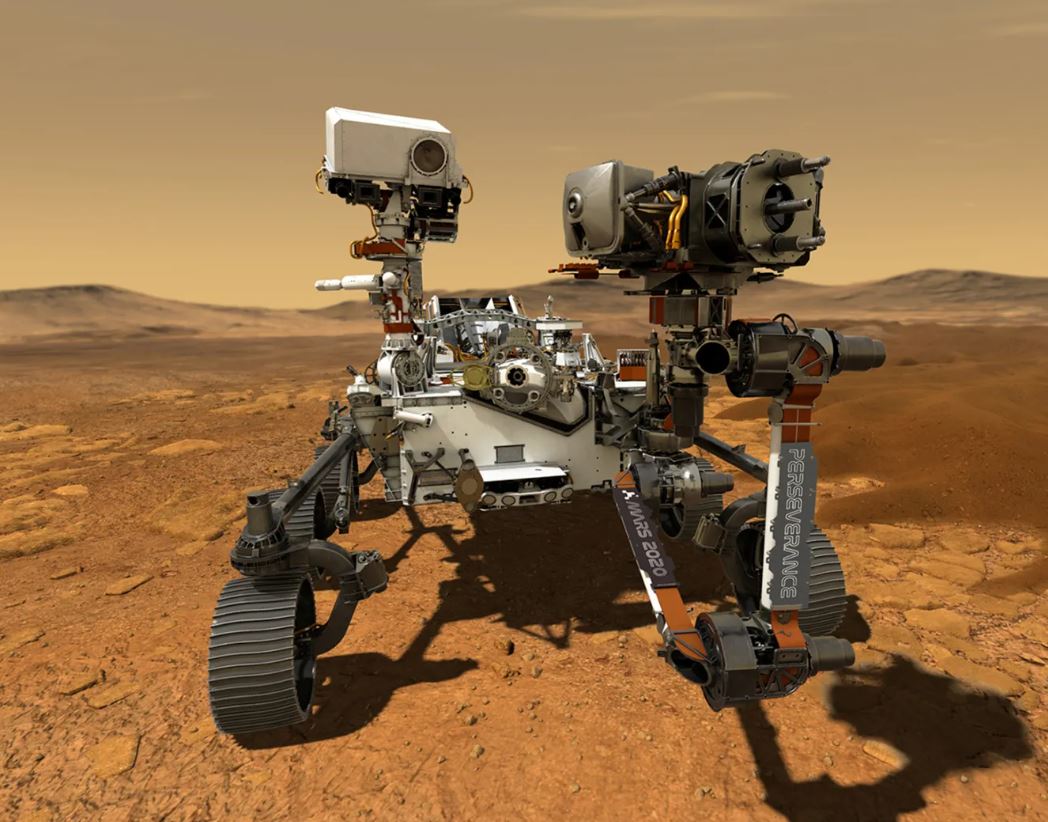 (Source: brookings.edu)
(Source: brookings.edu)
- One main reason to explore Mars is to determine whether life, especially microbes, ever existed, which will help scientists learn about life elsewhere.
- Studying Mars helps scientists learn about its volcanoes, water history, and climate, which teaches us about Earth’s evolution.
- Mars missions help us prepare for humans to visit Mars by testing ways to make water, oxygen, and fuel there.
- These explorations also improve space technology, such as robots and new engines, which can be useful for future space travel and Earth.
- Mars exploration inspires young scientists and engineers and encourages cooperation between space agencies like NASA, ESA, and others globally.
Conclusion
Various space agencies like NASA, ESA, CNSA, and ISRO lead Mars exploration. Mars Exploration Statistics different missions aimed at making scientific discoveries and preparing for human exploration. These missions focus on collecting Mars samples, testing technologies to use Martian resources, and planning for future human landings. This Mars Exploration Statistics include all global past and current analyses along with many projects costing several Mars missions by different organisations.
Despite the high costs, these missions are helping scientists learn more about Mars and paving the way for humans to explore the Red Planet in the future. The next two decades will see even more exciting missions and developments in Mars exploration.
FAQ.
By 2024, different countries had launched over 50 Mars missions, including orbiters, landers, and rovers, to explore Mars.
To date, there is no clear proof that life has been found on Mars. NASA’s rovers, Perseverance and Curiosity, search for signs of past microbes.
Mars has a thin atmosphere, making landings hard. Extreme cold, dust storms and high radiation also complicate human exploration.
Communication with Mars missions uses relay satellites such as NASA’s Mars Reconnaissance Orbiter and ESA’s Trace Gas Orbiter to send data.

Barry is a technology enthusiast with a passion for in-depth research on various technological topics. He meticulously gathers comprehensive statistics and facts to assist users. Barry's primary interest lies in understanding the intricacies of software and creating content that highlights its value. When not evaluating applications or programs, Barry enjoys experimenting with new healthy recipes, practicing yoga, meditating, or taking nature walks with his child.









